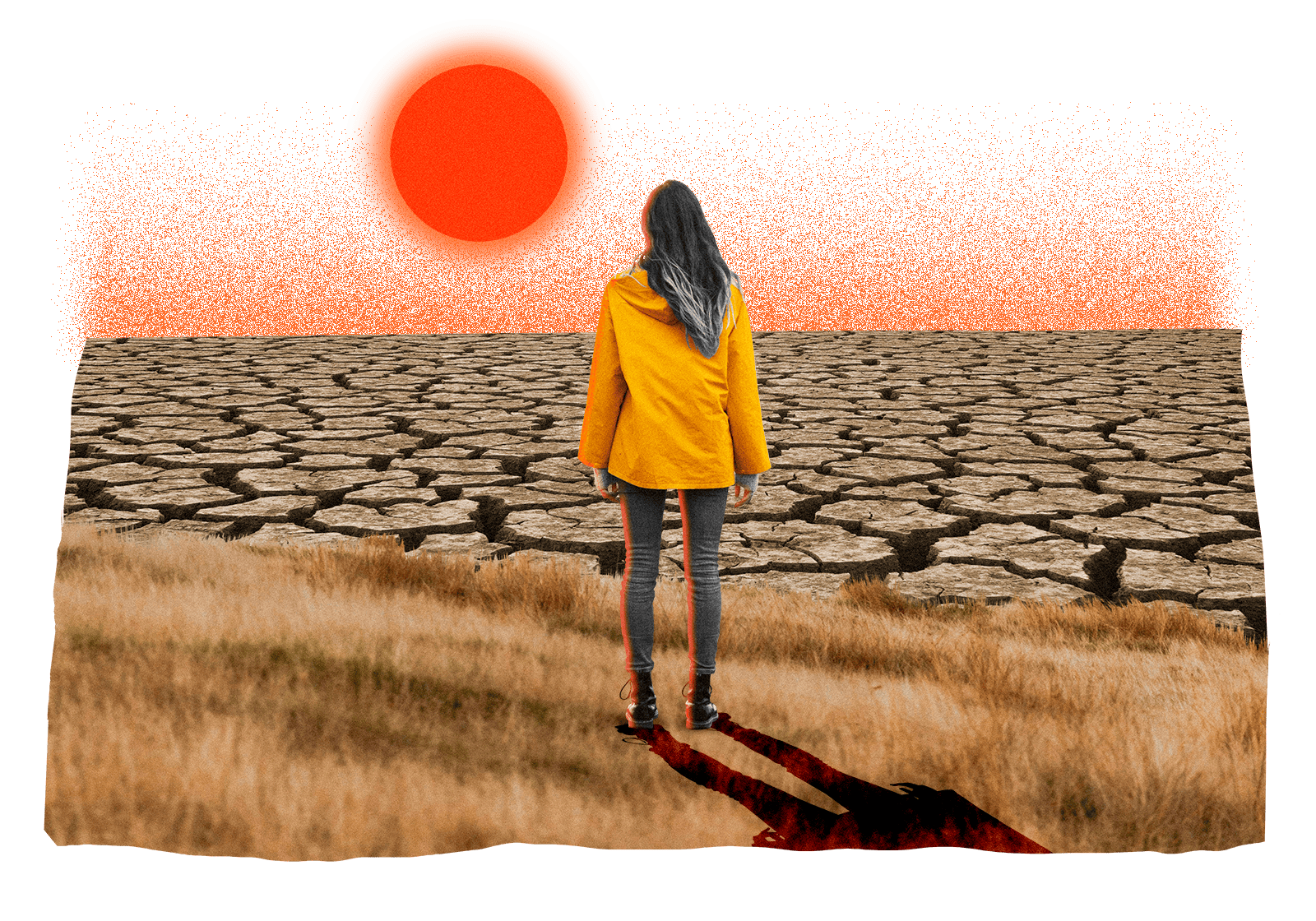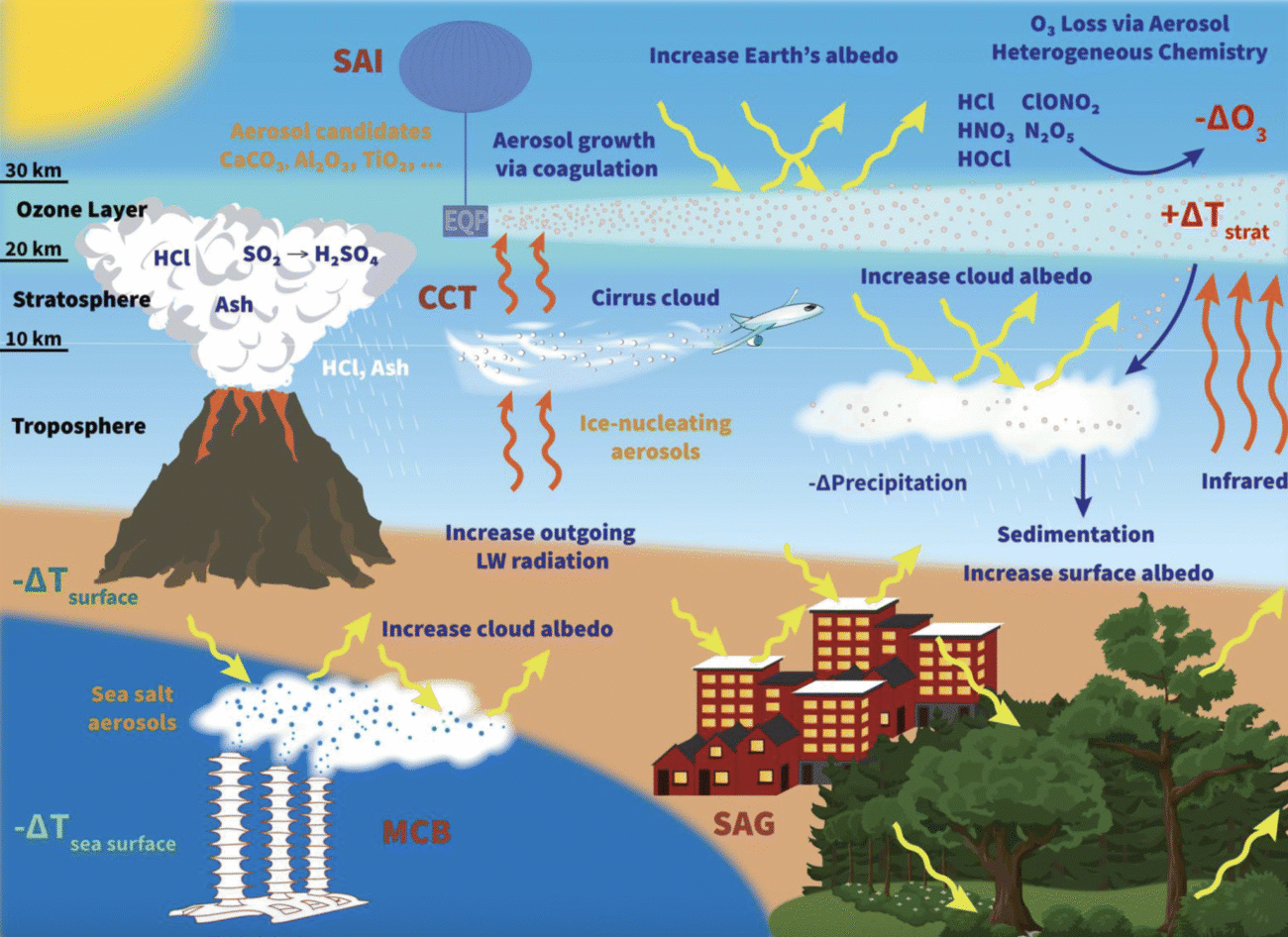The weather was bound to be bad in 2024, the hottest year on Earth out of the last 125,000 of them.
In Saudi Arabia, temperatures climbed above 125 degrees Fahrenheit during the Hajj in June, killing 1,300 people on their annual pilgrimage to the city of Mecca. Across the Arabian Sea, a prolonged heat wave led to hundreds more deaths in southern Pakistan. Hurricane Helene brought 30 inches of rain to an already-waterlogged western North Carolina in September, filling mountain valleys with mudslides and floods that surged through homes in one of the most destructive hurricanes in recent memory. Then, in November, a year’s worth of rain fell on Valencia and across eastern Spain in just eight hours. The floodwaters swept through towns, and flash flood alerts came too late for people already on the road or trapped in garages underground.
As climate change intensifies extreme weather in multiple ways, the kind of push alerts that popped up on phones around Valencia are arriving more and more often. But overwhelm people with too many warnings about heat or flooding or bad air quality, and they might start tuning them out, a phenomenon called alert fatigue that’s been troubling emergency managers. “It may be one of the biggest problems facing their field as climate disasters mount,” the journalist Zoë Schlanger wrote in The Atlantic this summer.
The phrase comes from medicine, where overworked doctors blasted with hundreds of medical alerts every day got so many false alarms, they’d learned to ignore them. Alert fatigue could also describe the dynamic of becoming numb to warnings about climate change more broadly. Since the late 1980s, scientists have been raising the alarm about the devastation that global warming would bring. Nearly two-thirds of Americans now understand that climate change is affecting their local communities, and yet they elected former President Donald Trump, who has promised to boost fossil fuel production and undo much of President Joe Biden’s climate agenda.
It’s a paradox emblematic of an especially turbulent, anxiety-filled time. As 2024 draws to a close, dictionary editors have been sifting through the lexicon to choose a term that encapsulates the spirit of the previous months, with this year’s selections including “brat” and “brain rot.” For us, alert fatigue stood out as the winner in a year in which severe weather — and the accompanying push alerts — added to the chaos. The runners-up, from “climate homicide” to “underconsumption core,” captured other aspects of what it was like to live on our overheating planet in 2024.
Anti-tourism
The opposition to masses of vacationers taking over your town.
Thousands of locals took to the streets across Southern Europe this year, calling for tourists to go home. These anti-tourism protests started in Spain’s Canary Islands this spring, and from there spread to Barcelona, Majorca, and Málaga, then to Venice, Italy, and Lisbon, Portugal. Residents argued that their governments, during a post-COVID travel boom, had started catering to visitors rather than to locals, turning their towns into theme parks and straining natural resources. Environmental groups like Greenpeace and the World Wildlife Fund supported them. Tourism is responsible for about 8 percent of global carbon emissions, thanks in large part to the emissions involved with flying. Protesters aren’t calling for an end to all tourism (which plays an important role in their local economies), but for a more sustainable, limited version that allows them to reclaim the souls of their cities.
Carbon cowboys
Those seeking to profit off the carbon-storing potential of other people’s lands.
Companies have been buying carbon offsets for years, paying to protect, say, a forest to claim they’ve canceled out the greenhouse gases they emit. Yet carbon-offset markets have been riddled with false promises and a lack of oversight, earning comparisons to the Wild West. The metaphor has extended to calling the companies involved in these schemes carbon cowboys. This year, investigations of lucrative conservation projects in Zimbabwe and the Amazon found that companies were failing to distribute money to the locals who were supposed to be rewarded, profiting off lands they often had no right to. “The system is very gameable,” Joseph Romm, a climate researcher at the University of Pennsylvania, told The Washington Post. “And the victim is the planet, and all of humanity who suffers because we’re not reducing emissions, but get to pretend we are.”

Category 6
A not-yet official classification for ultra-powerful hurricanes.
Category 5 has been synonymous with the scariest storms for decades. But as hurricanes have started to intensify more rapidly, some scientists have been making the case for expanding the Saffir-Simpson scale to include even scarier ones, creating a new category for storms with winds that top 192 miles per hour. A paper published earlier this year found that at least five storms had already passed the test for the Category 6 label, the strongest of which was Hurricane Patricia, which slammed into Mexico’s Pacific Coast in 2015 with winds peaking at 215 miles per hour. Tropical storms are fueled by warm waters, meaning that as climate change warms the atmosphere and oceans, more and more powerful storms could be headed our way. One objection some experts have with creating a Category 6 is that it might double down on what’s already the biggest communication problem with hurricanes: Flooding, not wind speed, is the deadliest risk of these storms.
Climate homicide
A new legal theory proposing that oil companies could be guilty of actual murder.
Climate change has killed roughly 4 million people since the year 2000, by one estimate. Some legal scholars are now making the case that oil companies like Exxon Mobil, which have long understood that burning fossil fuels could have lethal consequences, could be charged with every type of homicide in the United States, except for first-degree murder. In a paper in Harvard Environmental Law Review this spring, David Arkush, the director of the climate program for the advocacy group Public Citizen, and Donald Braman, a law professor at George Washington University, wrote that fossil fuel companies have been “killing members of the public at an accelerating rate.” While it’s unusual for criminal law cases to be brought against corporations instead of individuals, climate homicide could open up a new flank for fighting climate change in court. It has already gotten attention from law schools at Yale, New York University, and Vermont Law School, along with district attorney’s offices around the country.

Hot droughts
When extreme heat and drought happen at the same time
Combine a stretch of scarce rainfall with rising temperatures, and you get what’s known as a hot drought — a double whammy of dry conditions, because heat enhances evaporation. According to a study published in the journal Science Advances in January, hot droughts have become more frequent and severe across the Western United States, which is enduring its driest period since the 1500s. The Great Plains and parts of the Colorado River Basin are the most affected, the study found, with consequences for ecosystems, farming, and city planning. “It is clear that anthropogenic drying has only just begun,” the study’s authors wrote.
Semi-dystopian
A term to describe a future that’s nearly as bad as some authors have imagined.
In May, The Guardian released the results of a survey that hundreds of climate scientists had participated in, showing that almost half of them thought greenhouse gas emissions would push the world at least 3 degrees Celsius (5.4 degrees Fahrenheit) hotter than the preindustrial era by the end of this century. “I expect a semi-dystopian future with substantial pain and suffering for the people of the Global South,” one South African scientist, who wished to remain anonymous, told The Guardian. Ecological catastrophe has long been in the backdrop of dystopian fiction, like Octavia Butler’s Parable of the Sower, a 1993 novel set in a future California replete with raging infernos, scarce water, and mass migration to more fertile lands. These days, what once sounded outlandish is looking more and more like reality — as climate fiction authors themselves are beginning to admit.

Snow loss cliff
The point at which snowpack begins to disappear at an accelerating pace.
About 2 billion people in the Northern Hemisphere rely on snowmelt as a source of water. As winters warm, however, parts of the United States and Europe are close to a tipping point that could lead to a disastrous loss of snow, according to a study published in Nature in January. This snow loss cliff sits at the point where the average winter temperature hovers around 17 degrees F. Any warmer than that, and snowpack loss begins accelerating irreversibly. While most of the Northern Hemisphere’s snow is in the far north and safe for now, millions of people live in places that have already crossed the temperature cliff. Regions like the Western United States are on track to see a sharp decline in snowpack — further straining a region already struggling with drought.
Supercommuter
Someone who travels a very, very long distance to get to work.
The news site Fast Company did some back-of-the-napkin math and calculated that Niccol’s supercommute would emit 1,000 tons of carbon dioxide each year, equivalent to the annual energy use of 118 homes. He’s not the only supercommuter out there, with some people flying to high-paying jobs in New York City from places with lower housing costs, like Charlotte, North Carolina, and Columbus, Ohio. Long driving commutes also have a significant climate cost, with so-called “gasoline superusers,” the 10 percent of drivers who use the most fuel, guzzling more than a third of the country’s gas. Even though data suggest that working remotely instead of in an office can halve a person’s carbon footprint, businesses have been going in the opposite direction, forcing employees back to the office.

Underconsumption core
A social media trend with a new take on minimalism.
Behind the funny cat videos and chaotic cooking fails on TikTok, there’s a whole ecosystem of ads designed to make you spend money. In 2023, the push against out-of-control consumerism brought “deinfluencing.” In 2024, it morphed into even more of a mouthful: underconsumption core. The budget-friendly trend emphasizes buying only what you need and celebrating the old tank top or water bottle you’ve treasured since skinny jeans were the thing. (“Yes, being normal is now trending,” The New York Times quipped.) It’s a rejection of fast fashion, which has turned into a mounting climate and pollution problem. Well over half of Gen Z and millennial adults surveyed by Deloitte this year reported either avoiding fast fashion or wanting to do so in the future. Underconsumption core, the sustainable fashion TikToker Jade Taylor told Grist last month, is “a response to the type of normalized overconsumption that influencers have pushed with their marketing, but also due to climate anxiety and economic instability.”
Source link
Kate Yoder grist.org



